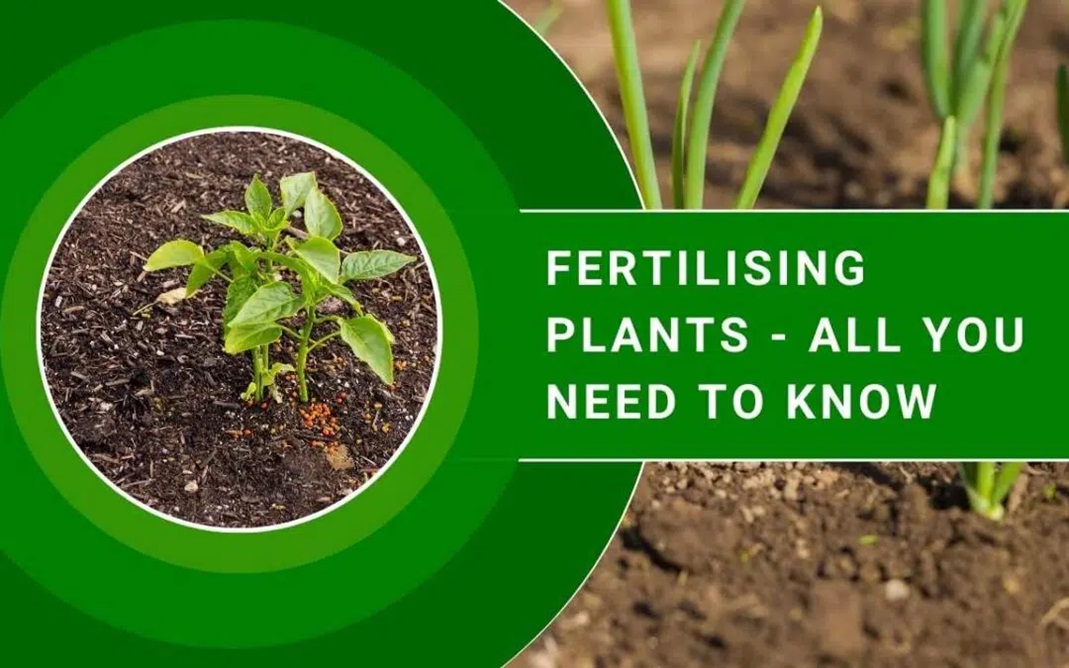Fertilising Plants: All you need to know

Strong 8k brings an ultra-HD IPTV experience to your living room and your pocket.
Title: Fertilizing Plants: Everything You Need to Know
Fertilizing plants is an essential practice for any gardener or plant enthusiast looking to promote healthy growth and vibrant blooms. Understanding the basics of fertilization can help ensure your plants receive the nutrients they need to thrive. From selecting the right fertilizer to applying it correctly, here's everything you need to know to nurture your plants to their full potential.
1. **Understanding Plant Nutrients**:
Plants require several essential nutrients for growth, including nitrogen, phosphorus, potassium, calcium, magnesium, and sulfur. These nutrients play vital roles in various plant functions, such as photosynthesis, root development, and flower production.
2. **Types of Fertilizers**:
Fertilizers come in various forms, including granular, liquid, and organic. Granular fertilizers release nutrients slowly over time, making them ideal for long-term feeding. Liquid fertilizers provide a quick nutrient boost and are easily absorbed by plants. Organic fertilizers, derived from natural sources like compost or manure, enrich the soil with essential nutrients and improve soil structure.
3. **Understanding NPK Ratio**:
The NPK ratio, displayed on fertilizer labels, indicates the percentage of nitrogen (N), phosphorus (P), and potassium (K) in the fertilizer blend. For example, a fertilizer with an NPK ratio of 10-10-10 contains 10% nitrogen, 10% phosphorus, and 10% potassium. Understanding the NPK ratio helps you choose the right fertilizer for your plants' specific needs.
4. **Timing and Frequency**:
Fertilizing frequency depends on factors such as plant type, soil fertility, and growing conditions. Generally, apply fertilizer during the growing season, starting in early spring and continuing through late summer. Avoid fertilizing dormant plants or during periods of extreme heat or drought, as this can stress the plants.
5. **Application Methods**:
When applying fertilizer, follow the instructions on the product label carefully. For granular fertilizers, spread evenly over the soil surface and water thoroughly to help nutrients penetrate the root zone. Liquid fertilizers can be applied directly to the soil or sprayed onto foliage for foliar absorption. Take care not to over-fertilize, as this can lead to nutrient imbalances or damage to plants.
6. **Organic Alternatives**:
Organic fertilizers offer a natural alternative to synthetic products, promoting soil health and sustainability. Compost, compost tea, and manure are excellent organic fertilizers rich in nutrients and beneficial microorganisms. Incorporating organic matter into the soil improves its structure, moisture retention, and nutrient availability to plants.
7. **Specialized Fertilizers**:
Certain plants may have specific nutrient requirements or preferences. For example, acid-loving plants like azaleas and rhododendrons benefit from fertilizers formulated for acidic soils. Likewise, flowering plants may benefit from a fertilizer high in phosphorus to promote blooming. Research the specific needs of your plants to select the most suitable fertilizer.
8. **Monitoring Plant Response**:
After fertilizing, monitor your plants' response to ensure they're receiving adequate nutrients. Signs of over-fertilization include leaf burn, stunted growth, or excessive foliage at the expense of flowers or fruit. Conversely, nutrient deficiencies may manifest as yellowing leaves, poor growth, or reduced flowering. Adjust your fertilizing regimen accordingly based on your observations.
9. **Environmental Considerations**:
When fertilizing plants, be mindful of environmental impact. Avoid over-application of fertilizers, as excess nutrients can leach into groundwater or runoff into waterways, causing pollution. Choose slow-release or organic fertilizers that minimize nutrient runoff and promote soil health.
10. **Conclusion**:
Fertilizing plants is a crucial aspect of gardening and plant care. By understanding the nutrient requirements of your plants, selecting the appropriate fertilizer, and applying it correctly, you can promote healthy growth, abundant blooms, and thriving gardens. Remember to monitor your plants' response and adjust your fertilizing practices as needed to ensure optimal results while minimizing environmental impact. With proper fertilization, you can enjoy lush, vibrant plants that enhance your outdoor space for years to come.
Note: IndiBlogHub features both user-submitted and editorial content. We do not verify third-party contributions. Read our Disclaimer and Privacy Policyfor details.


